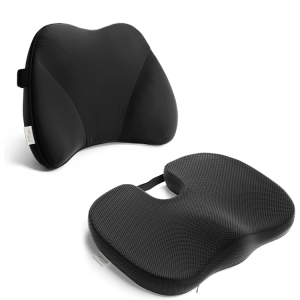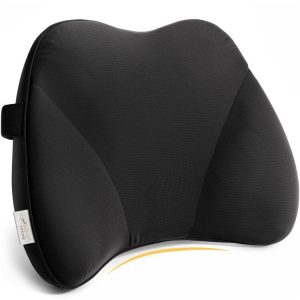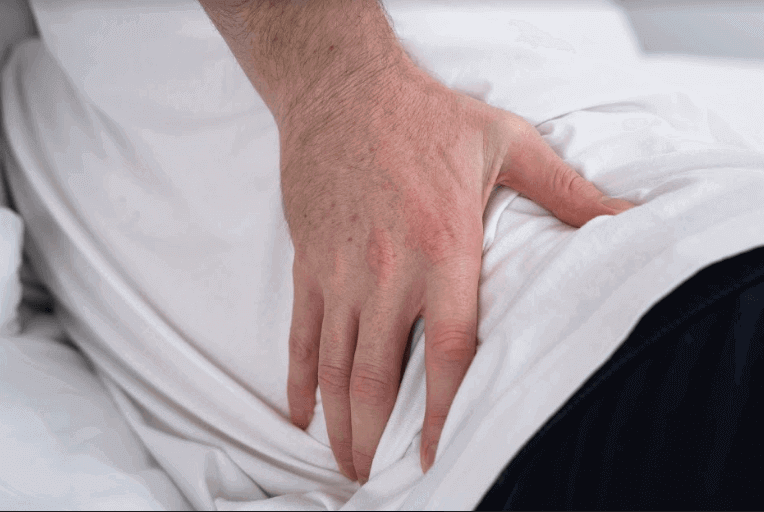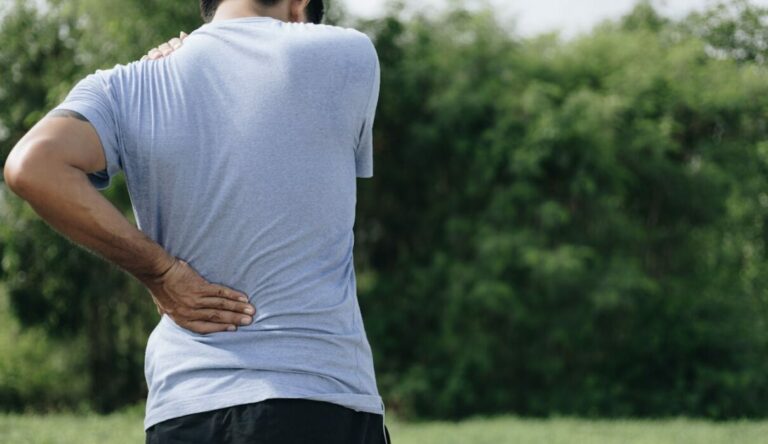
What is tailbone?
The tailbone or coccyx, located at the base of the spine, is a triangular bony structure made of three to five bony segments held in place by ligaments and joints. Coccydynia, commonly known as tailbone pain, can be caused by various conditions leading to acute or chronic pain in this area. It typically occurs in adolescents and adults, mostly women than in men.
Causes of Tailbone Pain
Often, the cause of the tailbone pain can be unknown, but there are prevalent conditions that may contribute to the pain, such as:
- Injury or trauma to the tailbone may lead to bruising, fracture, or coccyx dislocation.
- A direct hit to the tailbone, which commonly happens in contact sports, can also affect the tailbone.
- Falling on a hard surface, hitting the tailbone in a seated position is a common cause of tailbone pain.
- Inborn injury or fracture on the tailbone.
- Constant straining or friction against the coccyx (usually typical when cycling or rowing) can harm the tailbone.
Less common conditions that cause tailbone pain include compression of nerve roots, bone spurs, pilonidal cysts, and tumors.
Symptoms of Tailbone Pain
Tailbone pain can vary, depends on the symptoms. Some may endure bruising or swelling, while others may notice the pressure and heightened pain when sitting. Although the symptoms differ, tailbone pain usually leads to any pain at the spine's base.
Symptoms of tailbone pain are:
- Severe pain in the coccyx and restricted to that area of the body
- Tenderness in the tailbone, particularly when sitting
- Bruising in the injured area
- Pain when sitting
- Inflamed bowel movements
Depending on the symptoms, the pain in your tailbone might be a result from a previous injury or underlying medical condition. Regardless of the cause, there are many alternatives to ease the pain.
Who are Prone to Tailbone Pain?
Someone who already endured an injury to the spine's base likely experiences this type of pain. Women tend to suffer from tailbone pain five times more than men.
A woman in her later stages of pregnancy or post-birth may experience mild to severe tailbone pain. This type of discomfort is expected due to the stress placed on the tailbone during labor and pregnancy.
Putting excessive strain on the coccyx over and over again (such as cycling) may lead to tailbone pain, as the protective muscles and joints loosen from wear and tear.
A variety of conditions can cause tailbone pain. Although some may find the pain mild and typically go away on their own, many are still enduring pain caused by injury and other health problems.
Common Causes of Tailbone Pain
Trauma on the triangular region at the spine's base will likely result in tailbone pain. This section of the body is sensitive and, if it gets hit, can lead to fractures, bruising, or a broken coccyx.
Injury
Injuries are common to those playing contact sports or even someone who experienced an accidental fall. They likely get an impact on their spine's base, which apparently causes tailbone pain.
Strain
Constipation can generate pain at the spine's base, even hemorrhoids - as it tends to create internal trauma, which can lead to pain and swelling.
Pregnancy and Labor
Pregnancy and childbirth usually create trauma to the spine's base, as the ligaments in this region loosen throughout the birthing process. A woman in delivery may undergo excessive pain in the coccyx, much worse if she already had chronic back pain.
Medical Conditions Causing Tailbone Pain
Although not everyone experiences these conditions, a few of these can contribute to tailbone pain.
Tumors
Tumors located near or on the tailbone may be unpleasant. The pressure placed on the small bone structure makes it painful to sit or stand.
Levator Syndrome
Levator syndrome is an incidental pain in the rectum, sacrum, or tailbone, leading to tailbone pain in case no injury is present. This syndrome causes muscle spasms in the anus, causing pain in the hips and coccyx.
Bone Spurs
A bone spur or osteophyte is an enlargement of the natural bony structure. It can put pressure on the nerves and tendons, affecting the tailbone.
Many cases of bone spurs are non-symptomatic, and patients are unknowing of the condition until they had an X-ray for a different concern.
How to Treat Tailbone Pain?
Tailbone pain can often be excruciating and debilitating. Whether you treat the pain at home or seek a health care professional for further pain relief, always consider your pain levels and how manageable it is.
Medical Treatments
In searching for a medical professional, look for a well-qualified person to treat the symptoms and underlying problems to ensure relief and peace-of-mind.
- In special cases, narcotic pain medication is prescribed by health care providers for severe tailbone pain not cured with an over-the-counter prescription.
- Local anesthetics or corticosteroids are injected into the coccyx area if the tailbone pain prolongs and doesn't respond to other conservative treatment measures.
- Stool softeners medications to prevent constipation.
- Antibiotics are prescribed in case the tailbone is infected.
- Tailbone manipulation may be necessary to relocate the tailbone into its proper position and alignment.
- Physical therapy is typically recommended and useful for some people.
Home Remedies
The majority of cases for tailbone pain can be easily managed at home. It aims to control the pain and avoid further inflammation of the coccyx.
- Use NSAIDs (nonsteroidal anti-inflammatory drugs), such as ibuprofen, for pain control.
- During the first few days following the injury, apply ice to the tailbone area for 10-15 minutes, four times a day.
- Avoid sitting down for too long on hard surfaces. Try shifting sides while sitting. Lean forward and aim your weight away from the tailbone.
- Consume foods high in fiber to help soften your stool and avoid constipation. When ignored, it can aggravate the pain in the tailbone area.
- Invest in a high-quality seat cushion for tailbone pain. This cushion features an angled wedge structure that allows the spinal column's precise alignment while tilting the hips forward to restore your lower back's natural contour.
This cushion has an ergonomic contour design that reduces pressure on the coccyx and promotes proper posture while evenly distributing your weight over its surface.
Takeaway
Tailbone pain can be a tricky condition to determine since several conditions mimic its symptoms and the type of pain it exhibits. It is advisable to see your doctor if you notice any tailbone pain symptoms to eliminate these other conditions.
Other treatment methods may prevent and manage tailbone pain, such as limiting your sitting time, massaging the affected area, supportive pillows or cushioning seats, postural adjustments, and taking OTC medications to ease the pain immediately.






